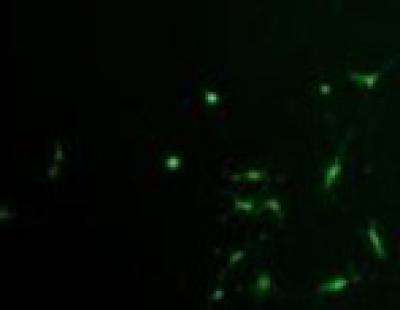660 nm red light-enhanced BMSCs transplantation for hypoxic-ischemic brain damage

A series of previous studies suggested that the neuronal differentiation rate of bone marrow mesenchymal stem cells during the in vitro culture reached 78-92%, but their in vivo transplantation efficiency, and survival and differentiation rates were very low. The low levels of bone marrow mesenchymal stem cell transplantation, survival, colonization and differentiation efficacy greatly restrict their therapeutic effect. Red or near-infrared light from 600-1,000 nm promotes cellular migration and prevents apoptosis.
Thus, Dr. Xiaoying Wu and co-workers from Chongqing University in China hypothesized that the combination of red light with bone marrow mesenchymal stem cell transplantation would be effective for the treatment of hypoxic-ischemic brain damage. They found that, after a 40-hour irradiation under red light-emitting diodes at 660 nm and 60 mW/cm2, an increasing number of green fuorescence-labeled bone marrow mesenchymal stem cells migrated towards hypoxic-ischemic damaged primary neurons. Meanwhile, neonatal rats with hypoxic-ischemic brain damage were given an intraperitoneal injection of 1 × 106 bone marrow mesenchymal stem cells, followed by irradiation under red light-emitting diodes at 660 nm and 60 mW/cm2 for 7 successive days. Shuttle box test results showed that, after phototherapy and bone marrow mesenchymal stem cell transplantation, the active avoidance response rate of hypoxic-ischemic brain damage rats was significantly increased, which was higher than that after bone marrow mesenchymal stem cell transplantation alone.
Experimental findings, published in the Neural Regeneration Research (Vol. 9, No. 3, 2014), indicate that 660 nm red light emitting diode irradiation promotes the migration of bone marrow mesenchymal stem cells, thereby enhancing the contribution of cell transplantation in the treatment of hypoxic-ischemic brain damage
More information:
Li XC, Hou WS, Wu XY, Jiang W, Chen HY, Xiao N, Zhou P. 660 nm red light-enhanced bone marrow mesenchymal stem cell transplantation for hypoxic-ischemic brain damage treatment. Neural Regen Res. 2014;9(3):236-242.
Provided by Neural Regeneration Research